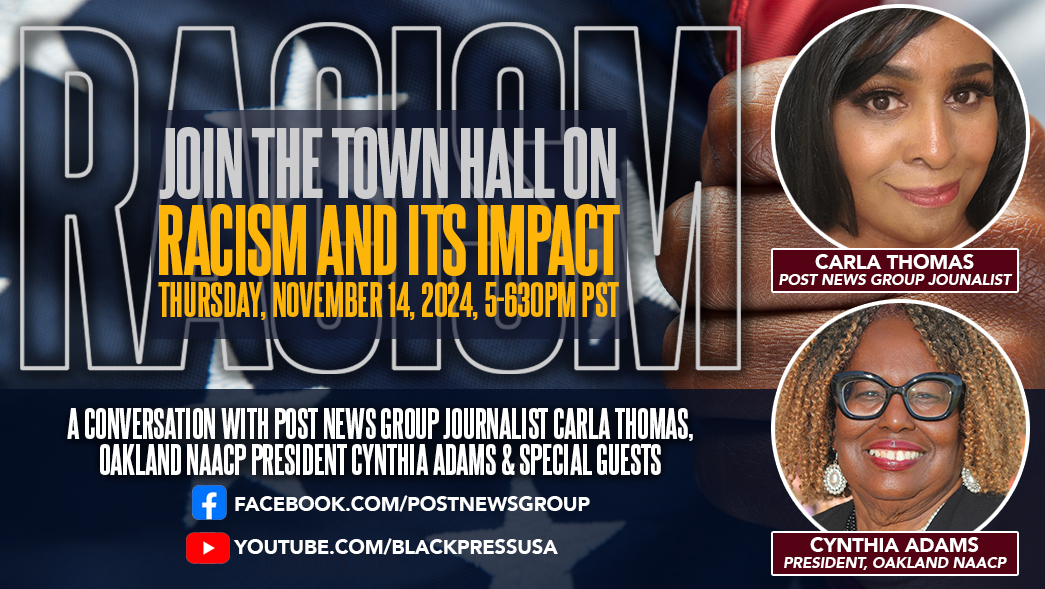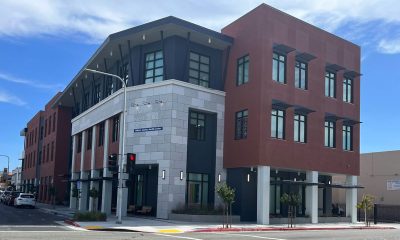Health
Watching Cooking Shows Could Lead To Weight Gain

In this Jan. 17, 2012 file photo, celebrity chef Paula Deen poses for a portrait in New York. (AP Photo/Carlo Allegri, File)
(The Huffington Post) – Your TV may be wreaking havoc on your diet. Watching any old show on the tube while simultaneously snacking can contribute to extra poundage, and new research suggests that food shows in particular (looking at you, Paula Deen) can have an effect, too.
A study published in the journal Appetite found that viewers who watch cooking shows for recipe instruction or inspiration are more at risk than those who watch with no intention to cook the meals at home (as well as those who do not watch at all). To conduct the study, researchers asked 501 women, aged 20 to 35, about the sources they used to get information about new foods and how often they cooked from scratch. The women also reported their own heights and weights.
Participants who reported watching food programs and cooking from scratch weighed an average of 10 more pounds, with a higher BMI, than those who claimed to obtain their food news offscreen, like from friends, magazine and cooking classes. “Food TV should be a viewing experience only, not a cooking experience,” said Lizzy Pope, Assistant Professor at the University of Vermont and the study’s lead author.
Activism
LIVE! — TOWN HALL ON RACISM AND ITS IMPACT — THURS. 11.14.24 5PM PST
Join us for a LIVE Virtual Town Hall on the Impact of Racism hosted by Post News Group Journalist Carla Thomas and featuring Oakland, CA NAACP President Cynthia Adams & other Special Guests.
Thursday, November 14, 2024, 5 p.m. – 6:30 p.m. PST


Join us for a LIVE Virtual Town Hall on the Impact of Racism hosted by Post News Group Journalist Carla Thomas and featuring Oakland, CA NAACP President Cynthia Adams & other Special Guests.
Thursday, November 14, 2024
5 p.m. – 6:30 p.m. PST
Discussion Topics:
• Since the pandemic, what battles have the NAACP fought nationally, and how have they impacted us locally?
• What trends are you seeing concerning Racism? Is it more covert or overt?
• What are the top 5 issues resulting from racism in our communities?
• How do racial and other types of discrimination impact local communities?
• What are the most effective ways our community can combat racism and hate?
Your questions and comments will be shared LIVE with the moderators and viewers during the broadcast.
STREAMED LIVE!
FACEBOOK: facebook.com/PostNewsGroup
YOUTUBE: youtube.com/blackpressusatv
X: twitter.com/blackpressusa
California Black Media
Gen. Election Update: Tracking Your Votes on Ballot Propositions — and What They Mean for Our Communities
In the Nov. 5 General Election, Californians cast their votes on ten propositions addressing issues from education and climate funding to prison labor and the minimum wage.

By Joe W. Bowers Jr., California Black Media
In the Nov. 5 General Election, Californians cast their votes on ten propositions addressing issues from education and climate funding to prison labor and the minimum wage.
Below is a breakdown of the propositions, their potential impact and an update on how we voted on them.
Likely to Pass:
Proposition 2: Bonds for Public School and College Facilities
With 56.7% support, Prop 2 is on track to pass. This measure would allocate $10 billion to repair and upgrade K-12 and community college facilities, especially in under-resourced schools. For students, this funding could lead to safer and more supportive learning environments.
Proposition 3: Constitutional Right to Marriage
Prop 3 currently has 61.4% support and is likely to pass. This measure aims to amend California’s constitution to affirm marriage rights for all. For LGBTQ+ individuals in our communities, this is a powerful affirmation of equality and inclusion.
Proposition 4: Bonds for Water, Wildfire, and Climate Risks
Currently passing with 57.8%, Prop 4 is on track to deliver $10 billion for projects that address water quality, wildfire prevention, and climate resilience. This could have a significant impact on communities that face the harshest effects of climate change.
Proposition 34: Restricts Spending of Prescription Revenues
Prop 34 is narrowly passing with 51.4% support, indicating that it may succeed. The measure would require specific healthcare providers to use 98% of revenue from federal drug discount programs on direct patient care. This could improve healthcare access for low-income residents.
Proposition 35: Provides Permanent Funding for Medi-Cal
With 66.8% of voters in favor, Prop 35 is on course to pass, securing permanent funding for Medi-Cal, California’s low-income healthcare program. For many in our communities who depend on Medi-Cal, this measure promises stability and continued access to essential healthcare services.
Proposition 36: Increased Sentencing for Certain Drug and Theft Crimes
With strong support at 70.5%, Prop 36 is poised to pass, increasing penalties for specific theft and drug offenses. This measure would partially roll back sentence reductions established by Prop 47, sparking concerns about potential increases in incarceration rates.
Likely to Fail:
Proposition 5: Bonds for Affordable Housing and Infrastructure
With 56.4% of voters opposed, Prop 5 is likely to fail. The measure aimed to reduce the voting threshold for local bonds from two-thirds to 55%, making it easier to fund affordable housing. Without it, local governments will continue to face higher approval requirements, potentially slowing progress on affordable housing solutions.
Proposition 6: Eliminates Forcing Inmates to Work
Currently failing with 54.9% opposed, Prop 6 is expected to be defeated. This measure would have ended involuntary labor for incarcerated individuals, a practice critics argue disproportionately affects Black inmates. It’s likely failure means the prison labor system will remain unchanged.
Proposition 32: Raises Minimum Wage
With 52.1% of voters opposing it, Prop 32 appears likely to fail. This measure would have raised the minimum wage to $18 an hour. While proponents argued it would provide greater financial stability for low-wage workers.
Proposition 33: Local Government Residential Rent Control
With 61.9% voting “no,” Prop 33 is expected to fail, meaning that local governments won’t gain expanded authority to enact rent control. Real estate groups argued that this measure could hinder housing development. Its failure means that current rent control laws will remain in place, leaving fewer protections for renters.
California Black Media
Covered California Open Enrollment Began Nov. 1
Open enrollment for Covered California kicked off on Nov. 1, 2024, offering individuals, families, and businesses a chance to secure quality, affordable health insurance for the upcoming year. This annual enrollment period allows California residents to choose from a variety of health plans that meet their specific needs. Covered California offers comprehensive coverage, including preventive care and financial assistance to help eligible applicants lower their monthly premiums.

By Bo Tefu, California Black Media
Open enrollment for Covered California kicked off on Nov. 1, 2024, offering individuals, families, and businesses a chance to secure quality, affordable health insurance for the upcoming year. This annual enrollment period allows California residents to choose from a variety of health plans that meet their specific needs.
Covered California offers comprehensive coverage, including preventive care and financial assistance to help eligible applicants lower their monthly premiums. The program features insurance plans from leading providers, ensuring access to essential health services such as doctor visits, hospital care, and mental health services.
This year, notable updates include expanded financial assistance, which increases the support available for eligible households to help offset monthly costs. Additionally, consumers will find greater plan flexibility, allowing them to select options that fit their lifestyles and budgets. Access to no-cost preventive services — like vaccinations, screenings, and annual check-ups — remains a priority.
Key enrollment deadlines are set as follows:
- The open enrollment period runs from Nov. 1, 2024, to Jan. 31, 2025.
- Those who enroll by Dec. 15, 2024, will have their coverage start on Jan. 1, 2025.
To facilitate enrollment, applicants can fill out an inquiry form on the Covered California website, reach out to Certified Enrollment Counselors, or contact Covered California directly at (888) 234-5366 or via email at GetCovered@cbhn.info.
The California Black Health Network (CBHN) collaborates with Covered California to advocate for health equity, focusing on underserved communities, including unemployed and gig workers. CBHN’s certified enrollers engage in outreach and onsite signups to help individuals access affordable healthcare options.
-

 Alameda County4 weeks ago
Alameda County4 weeks agoAlameda County District Attorney Pamela Price Announces $7.5 Million Settlement Agreement with Walmart
-

 Activism3 weeks ago
Activism3 weeks ago‘Jim Crow Was and Remains Real in Alameda County (and) It Is What We Are Challenging and Trying to Fix Every Day,’ Says D.A. Pamela Price
-

 Bay Area4 weeks ago
Bay Area4 weeks agoIn the City Attorney Race, Ryan Richardson Is Better for Oakland
-

 Activism3 weeks ago
Activism3 weeks agoOakland Post: Week of October 30 – November 5, 2024
-

 Alameda County3 weeks ago
Alameda County3 weeks agoD.A. Price Charges Coliseum Flea Market Vendors in Organized Retail Theft Case
-

 Activism3 weeks ago
Activism3 weeks ago‘Criminal Justice Reform Is the Signature Civil Rights Issue of Our Time,’ says D.A. Pamela Price
-

 Activism2 weeks ago
Activism2 weeks agoLIVE! — TOWN HALL ON RACISM AND ITS IMPACT — THURS. 11.14.24 5PM PST
-

 Activism4 weeks ago
Activism4 weeks ago“Two things can be true at once.” An Afro-Latina Voter Weighs in on Identity and Politics






















































